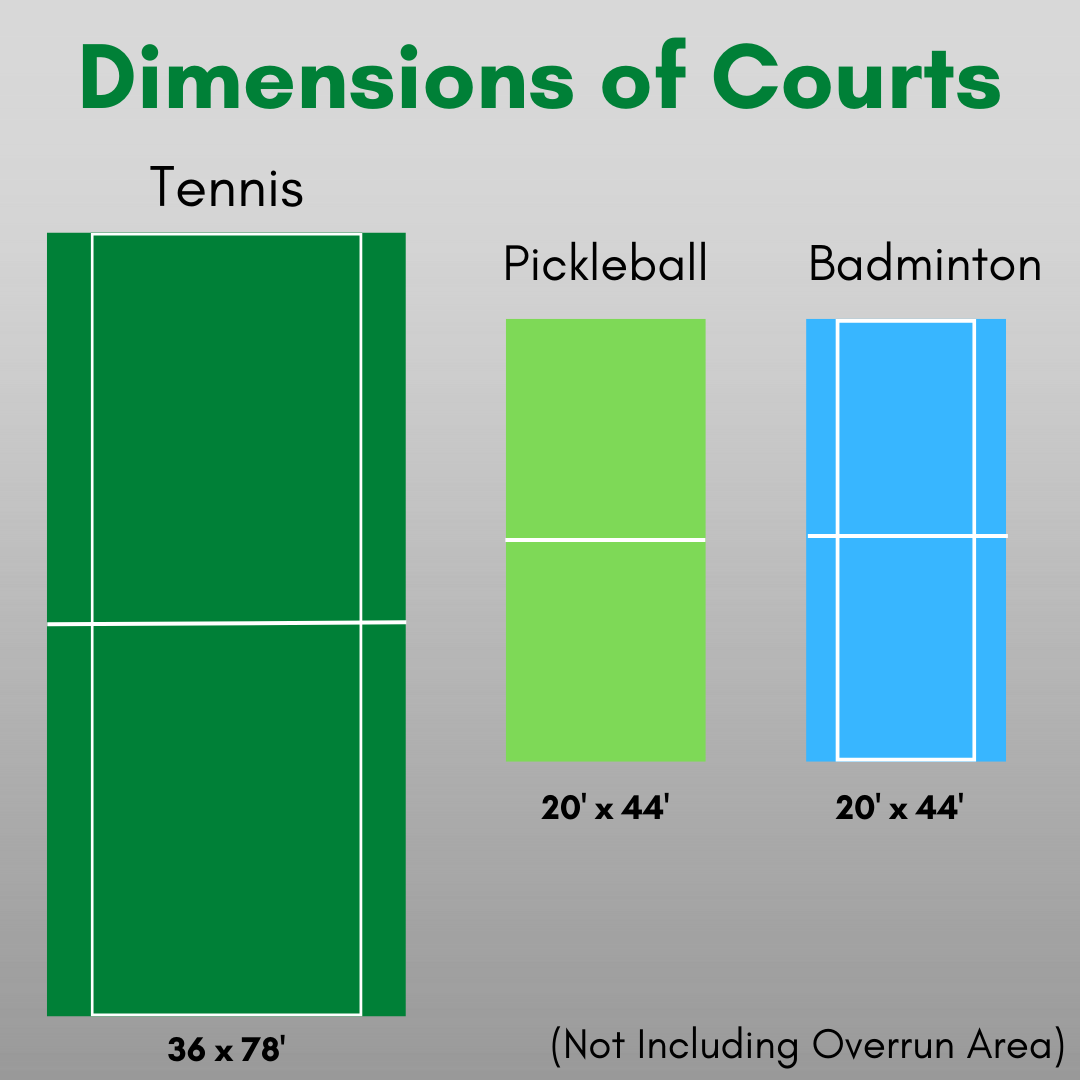
Pickleball is America’s fasting growing sport. It’s estimated pickleball has over 4.8 million players nationwide--an increase of nearly 40% during the last two years. Credit the pandemic for some of pickleball’s rising popularity. During lockdowns, people set up pickleball courts on driveways and sidewalks.
More and more parks and recreation departments are installing pickleball courts--or getting requests from their community to add some.
Wondering where to start? Here is a brief primer on pickleball and pickleball courts.
What is Pickleball?
In its simplest form, pickleball only requires a net, paddles, and a ball. It’s an easy-to-learn game that appeals to people of all ages. The game, however, becomes an engaging, fast-paced competition for pickleball veterans.
Pickleball developed out of necessity. In 1965, three Washington dads needed something to keep their bored children occupied. Pickleball was the solution for those long summer days.
And now it’s an internationally recognized game.
Pickleball in a nutshell: Think of it as a mashup of tennis, ping-pong, and badminton. One player serves a plastic ball across the net to the opposing side. Players hit the ball back and forth until one player fails to get it back over the net.
You can see detailed pickleball rules on the USA Pickleball website.
The Pickleball Court
The pickleball court needs a hard surface, a net, and--preferably--lines. The court is about the size of a badminton court with a net just a little bit shorter than a standard tennis net.

Court Size Comparison
- Pickleball: 20’ x 44’ (singles and doubles)
- Tennis Court: 27’ x 78’ (36’ x 78’ doubles)
- Badminton Court: 14’ x 44’ (20’ x 44’ doubles)
Many parks and recreation departments are adding pickleball lines to tennis courts or converting them solely for pickleball use. Before installing a pickleball court or converting other courts, here are some things to consider.
What to Consider Before Installing a Pickleball Court
Space Needed for A Pickleball Court
Each court must have a hard playing surface of at least 30’ x 60’ feet to allow space for overruns.
Base for Pickleball Courts
Concrete or asphalt works well as a base for pickleball courts. Wood or rubber flooring can be used for indoor courts. The lack of texture on smooth floors may cause the ball to skip low.
Coating for Pickleball Courts
100% acrylic coatings are recommended for surfacing pickleball--and athletic--courts. Acrylic coatings are breathable, which helps them maintain their integrity longer despite moisture and weather conditions.
You may also select to install a rubber coating cushion system along with the coating for better resilience and more dynamic body impact response. For players, cushioned systems are more impact and joint-friendly without affecting the ball bounce.
Fencing Around Pickleball Courts
Chain link fencing offers a cost-effective option for containing pickleball courts. The ball is about 3 inches in diameter, so make sure the fence openings are 2 inches or less. Make backstops a minimum of 10 feet high. Install gates on both ends of the court for easier access.
Windbreaks, windscreens, or mesh covers are recommended for the fencing to prevent play disruption during windy days. They also provide a background for better ball visibility.
Pickleball Court Lighting
If you plan on allowing your visitors to use outdoor pickleball courts after dark, then you’ll need an adequate lighting system--or a lighting system upgrade.
The amount of light required depends on the skill level of the players. Novice players need less light. At higher skill levels, the play is faster and more intense--more light is required to keep track of the ball.
Noise Reduction
Nearby neighbors may complain about the sounds of people gathering and a bunch of plastic balls hitting wooden (or composite) paddles.
An outdoor acoustical barrier may reduce noise by up to 50 percent. Sound-reducing materials can be secured to a chainlink fence, wooden shadow box fence, or fencing frame as stand-alone material.
Other Amenities
Depending on where you plan to place your pickleball courts, you may choose to add other amenities for the visitors' comfort and convenience. Amenities include:
- Court benches
- Shade Shelters
- Water Fountains
- Concessions
- Gear/Maintenance Storage
- Access to Electricity
- Seating for Spectators
- Portable or Permanent Restroom Facilities
Budget Considerations
The price range for adding a pickleball court to your park and facility varies depending on your plans and needs. Portable, commercial-grade pickleball nets can run from a few hundred to over a thousand dollars.
Resurfacing an old tennis court may cost between $3,000 and $6,000 depending on the location, size, and condition of the court area getting resurfaced.
And, if you want a brand new state-of-the-art pickleball complex with professional-grade lighting, spectator seating, and luxury restroom facilities, the installation can easily reach six figures.
In part 2 of this series, we discuss the most common ways to install a pickleball court and how to maintain it.
